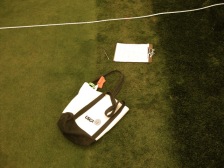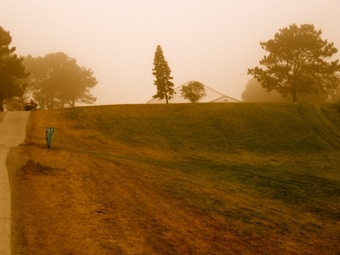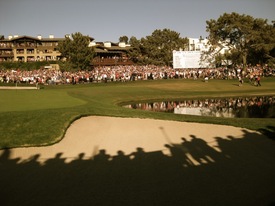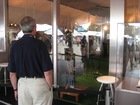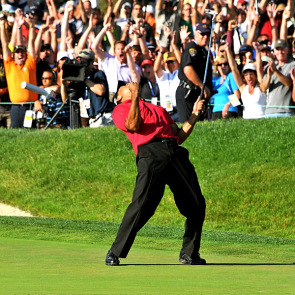"The fact that you've not heard anything should not be construed as meaning there's a problem."
/Several interesting items in the USGA press conference at Interlachen where David Fay, Roberta Bolduc and Mike Davis faced the inkslingers who miraculously asked some great questions (offsetting the point missers lobbing stuff about a U.S. Senior Women's Open). After Davis talked at length about Interlachen's design attributes and Brian Silva's restoration work there, he shared this about the bunkers at Torrey Pines:
The bunkers like we have been doing the last few years, we did stir up the bottoms to try to make the bunkers a little bit softer so that the player can't get as much spin. And I was telling somebody the other day, one of the best things I heard at Torrey Pines, it just -- I almost wanted to do a cartwheel is when a player actually said, we were trying to avoid bunkers at Torrey Pines. Because we haven't heard that in who knows how long.
Davis, on driveable par-4s this week at Interlachen and in future USGA course setups:
You have to have enough risk but you've got to have the reward with it. They have to match. And in fact David and I talked about it before Sunday of Torrey Pines, that I thought it was going to work well for the reasons I kept going through in my mind, but you don't really know. And if only ten players out of the 80 went for it I would call it a failure but I think there was 57 or 56 or whatever that went for it. And it's, you know, there was a blend of scoring.
But when we did it at Oakmont it worked. Because those holes were architecturally set up for it. We did it the one hole at Winged Foot. But, no, we will not force it. So it won't necessarily be a trademark. But I think when you get that opportunity, it's really neat because you do make the players think. And we want -- we don't want this to be gimmicky, but at the same time we want it to be the hardest championship of the year, whether it's the U.S. Girls Junior, the Women's Open, the U.S. Open or the Senior Men's Amateur, but at the same time there's nothing wrong with introducing more risk, reward and making the players think, giving them opportunities, and taking a hole and really saying if you play it great you can make birdie, eagle, but if you don't play it so great, if you try something and don't pull it off you're going to pay the price.
And look at this troublemaker with the killer follow up about those R&A lollygaggers.
Q. David, could we get an update on the groove situation? Wasn't that due for some sort of roll out in January, I think, in theory? Has there been any developments on that front or are we going to have to all change irons?
DAVID FAY: The latest update is there's no update. We are still on track, we hope. There are a number of components that we have to get everything resolved. A number of -- and we're moving ahead on that. But to give you a timetable at this time, it would be premature.
Q. R & A still a part of the equation in getting them signed up for the same time?
DAVID FAY: Well the R & A, it's a change in equipment, a change in any rule will not happen unless both sides support it. Fully. The fact that you've not heard anything should not be construed as meaning there's a problem. It's just that we -- anything dealing with equipment, particularly these days, is complex. You deal with the specifications, manufacturing tolerances, I think that one thing I would say that we have never, at least in my experience at the USGA, researched and done the lab testing and the player testing to the degree that we have with this subject of grooves.
Just not enough for the R&A!



